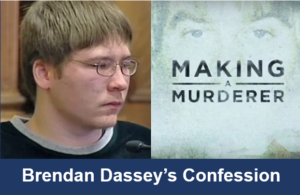 Several years ago, Netflix released a highly popular series called Making a Murderer. It covered the case where Steven Avery and his nephew, 16-year-old Brendan Dassey, were convicted in the first-degree murder of Teresa Halbach that occurred in Manitowoc County, Wisconsin on October 31, 2005. Both were sentenced to life imprisonment—Avery with no possibility of parole and Dassey eligible to apply in 2048. While the evidence against Avery is strong, the facts supporting Dassey’s guilt hinge solely on his police confession to which there’s a high likelihood of being false and obtained under significant coercion with psychological manipulation.
Several years ago, Netflix released a highly popular series called Making a Murderer. It covered the case where Steven Avery and his nephew, 16-year-old Brendan Dassey, were convicted in the first-degree murder of Teresa Halbach that occurred in Manitowoc County, Wisconsin on October 31, 2005. Both were sentenced to life imprisonment—Avery with no possibility of parole and Dassey eligible to apply in 2048. While the evidence against Avery is strong, the facts supporting Dassey’s guilt hinge solely on his police confession to which there’s a high likelihood of being false and obtained under significant coercion with psychological manipulation.
I recently published a piece titled Netflix Making a Murderer. Did Police Really Frame Steven Avery? It covers the evidence that convicted Avery and concludes Avery was guilty beyond a reasonable doubt. I ended the post by saying I had severe doubts about the validity of Brendan Dassey’s confession.
For the past three weeks, I’ve closely looked at Brendan Dassey’s side of the Teresa Halbach murder file. This was a complex and time-consuming task as there’s a lot of material available, and that’s an understatement. At the heart of the issue is determining if Dassey truly was involved as a murder accomplice with Avery as he inconsistently claimed in his recorded confession. Or, the question also asks, “Did Brendan Dassey falsely confess and therefore was wrongly convicted?” which would be a horrific miscarriage of justice.
As I remarked, this is a highly complex subject that I’ve spent hours examining, and it’s impossible to cover all the details in a blog post. I’ve reached a conclusion, based on the balance of probabilities and from my personal experience with investigating homicides and obtaining murder confessions. First, let’s review the case facts, look at who Brendan Dassey is, and then discuss the issues in play that led to Dassey’s conviction.
If you haven’t already done so, it’s worthwhile to read the prequel post Netflix Making a Murderer. Did Police Really Frame Steven Avery?
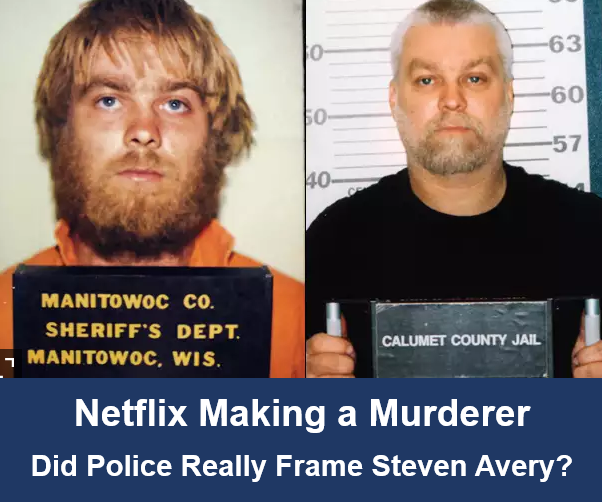 Teresa Halbach was a 24-year-old photographer who attended Avery’s auto salvage business to photo a vehicle Avery wanted to list on Autotrader. She was reported missing two days later. On November 6, 2005, her incinerated body was found in a burn pile behind Avery’s shop. Other items belonging to Halbach were also located—her vehicle, camera, phone, and an ignition key found in Avery’s bedroom. Forensic evidence indisputably linked Avery to the crime, and a bullet also linked her shot body to Steven Avery’s rifle.
Teresa Halbach was a 24-year-old photographer who attended Avery’s auto salvage business to photo a vehicle Avery wanted to list on Autotrader. She was reported missing two days later. On November 6, 2005, her incinerated body was found in a burn pile behind Avery’s shop. Other items belonging to Halbach were also located—her vehicle, camera, phone, and an ignition key found in Avery’s bedroom. Forensic evidence indisputably linked Avery to the crime, and a bullet also linked her shot body to Steven Avery’s rifle.
In February 2006, Brendan Dassey surfaced as an accomplice suspect. Following a chain of police interviews—interrogations if you like—Dassey made progressive statements where he went from knowing nothing to claiming to have raped Halbach, slit her throat, and helped Avery burn her body. He was convicted based on his statements alone, and there was absolutely no corroborating physical or other evidence to support that his confession was truthful Subsequently, Dassey’s conviction has been upheld, and his appeal to the Supreme Court of the United States has been denied. Dassey remains in jail under a strong probability of being completely innocent.
Brendan Dassey and His Legal Path
Brendan Ray Dassey was born on October 19, 1989, in Manitowoc County, Wisconsin to parents Barbara and Peter Dassey. He was raised along with four brothers in a mobile home located on the Avery property and, in the fall of 2005, attended Mishicot High School. Dassey struggled with education and communication. His IQ was rated at 65 which classified as cognitively disabled and borderline for mentally handicapped. Some of his classes were in the special education category, and he was failing at three of those.
Brendan Dassey was described as quiet and introverted with an interest in WWE wrestling, animals, and video games. He appeared slow to comprehend and slow to respond. This is clearly evident in his recorded police engagements. Before this case, Dassy had no contact with the criminal justice system and was not a troublemaker.
Dassey’s first police interview in the Halbach murder was on November 6, 2005. He was returning to the Avery property and riding in Steven Avery’s car driven by Dassey’s older brother. The police were onsite investigating Halbach’s disappearance, and they had a warrant to search that vehicle.
Brendan Dassey was isolated in the back of a police car and spoken to by officers who wanted to know if Dassey had seen Halbach on the property. Dassey stated he had not and had no information to offer that would assist in locating Halbach and determining what happened to her. This interview was audio recorded, but Dassey was not under arrest and did not have his rights read to him.
The police continued the Halbach investigation during November and December of 2005. During this period, they focussed solely on Steven Avery and assumed he’d acted alone. There was no evidence to suspect otherwise, and Brendan Dassey wasn’t on their radar.
This changed in January 2006, when Kayla Avery (Brendan Dassey’s cousin) confided to a school counselor that she suspected Dassey knew something about the Halbach murder. Kayla stated Dassey was “acting weird”—not sleeping and had lost a lot of weight—and becoming very emotional over trivial matters. This went unreported to authorities until it became a tip to the police on February 20, 2006.
On that afternoon, Detectives O’Neill and Baldwin (the same pair who spoke to Dassey on November 6, 2005) attended Dassey’s high school. They interviewed him in a private room and asked him general questions about the case. Dassey said he knew nothing but seemed evasive about seeing Teresa Halbach on the property.
O’Neill and Baldwin conferred with detectives Mark Weigert and Tom Fassbender who would handle Brendan Dassey from then on. Weigert and Fassbender went to Dassey’s high school on February 27, 2006, and spoke with him privately for an hour and forty-five minutes. He was not read his rights (the Miranda warning) and had no lawyer or adult present to represent him, however the interview was recorded, and all conversation remains on the record. Towards the end, Dassey, under pressure from the detectives, indicated he had seen Teresa Halbach on the property talking with Steven Avery on the afternoon of October 31, 2005.
The detectives switched tactics from a ‘soft” interview style to what many criticize as a controversial “hard” interrogation process known in law enforcement as the Reid Technique. Employing the Reid Technique to induce a confession is a core issue with today’s online critics assessing whether Brendan Dassey falsely confessed, and we’ll go much further into that arena in a bit. As well, we’ll examine the effect the Miranda Warning had on Brendan Dassey, the lack of legal representation during subsequent police contact, and whether his mental capacity was suitable to truly understand the incriminating statements he was about to make.
At 3:21 pm on February 27, 2006, Detectives Weigert and Fassbender began a firmer interrogation on Brendan Dassey. They’d taken him from school to the police station where they contained him in an audio/video room specifically designed for interrogations. The recording shows that the officers read Dassey his Miranda rights but were specific that he was not under arrest and was free to go at any time. Dassey waived his rights, and no lawyer or supportive adult was present.
The interrogation lasted forty-three minutes and ended when Dassey stated that Avery had told him what happened—Avery stabbed Halbach and transported her body to the firepit on a snowmobile sled. Further, Dassey alleged that Avery told him he hid the knife under Halbach’s vehicle seat.
Now the detectives took an unusual step. They contacted Dassey’s mother and had her and Brendan taken to a hotel and kept overnight under police guard. It’s assumed the detectives returned to the Avery property for a search, and it’s recorded that Weigert and Fassbender went to the hotel late in the evening and had an unrecorded conversation with Brendan Dassey.
On the morning of March 1, 2006, Weigert and Fassbender had a four-hour and nineteen-minute recorded session with Dassey. This time, they used a soft interview setting, and this video became the central piece of incriminating evidence used to convict Dassey. It’s meandering to view and considerably complex to understand exactly what Dassey says.
To paraphrase rambling, he eventually states he was with Steven Avery while Avery had Teresa Halbach tied naked to a bed while they both raped her. Then, according to Dassey’s confession, Avery stabbed and shot Halbach and both took her body to the burn pit. In one fleeting moment, Brendan Dassey says he cut Teresa Halbach’s throat, and this is the statement portion that secured his first-degree murder conviction.
Watch the Brendan Dassey confession video.
Brendan Dassey was charged with Halbach’s murder and remained in custody through his lengthy legal process. He was convicted in a jury trial on April 27, 2007, and was sentenced (at 17 years old) to life imprisonment. His first appeal was denied and Dassey entered the mainstream penitentiary system.
In 2010, Dassey entered a motion for a retrial based on the grounds of rights infringement leading to a false confession. It was denied by the trial court and reaffirmed denial by the Wisconsin Court of Appeals in January 2013. The Wisconsin Supreme Court declined to review that denial, and it wasn’t until the first Netflix series Making a Murder aired in 2015 that Dassey’s case took on a new life. There was so much public outcry that Dasey’s new lawyer, Laura Nirider, successfully won a writ of habeas corpus in a federal court that ordered a judicial review on the grounds that Dassey’s juvenile confession had been coerced and therefore was involuntary and unconstitutional.
In August 2016, United States magistrate judge William E. Duffin agreed with the false confession position. He called the case a “horrific miscarriage of justice”. Subsequently, the Wisconsin Justice Department appealed Duffin’s decision to the US Court of Appeals for the Seventh District which agreed to review matters but denied Dassey’s release from custody.
In June 2017, a three-panel of appellate judges upheld the magistrate’s decision to overturn Dassey’s conviction, but the justice department immediately filed an en banc rehearing where the entire appellate panel must rule, not three judges but all seven. On December 8, 2017, the panel voted 4-3 to reinstate Dassey’s conviction. Brendan Dassey lost his final legal battle on June 25, 2018, when the United States Supreme Court refused to hear the matter—no reasons given. He now remains in prison until at least 2048.
So, that’s the timeline and the case facts of how Brendan Dassey’s legal path played out. Let’s look at whether there was any fact in the confession that caused this path, and this starts with examining if his confession or statement to the police was legal.
Admissibility of Statements Given to Persons in Authority
The core legal argument around Dassey’s conviction is that his confession—a statement, in legal terms—should not have been admitted or allowed to be entered as evidence at his jury trial. After all, there was absolutely no physical or other incriminating evidence to independently support or corroborate that Dassey was being truthful in his March 1, 2006, statement during his interrogation with Detectives Weingert and Fassbender. Without Dassey’s confession, the state had no evidence against him, and the charges would have to have been dismissed.
Note that of all the interview/interrogation sessions Dassey encountered with the police (who are considered persons in authority)—seven in total as there were two more after his March 1, 2006, statement—only one was brought before the court and ruled on about admissibility. The process of ruling on a statement’s admissibility is called voir dire which is a trial within a trial and held away from the jury’s presence. If the voir dire finds the statement to meet the admissibility threshold, then the jury is allowed to see and hear the evidence. If the voir dire finds the statement is ruled inadmissible, then the evidence cannot be presented.
There are two main tests for the admissibility of statements given to persons in authority. One is that the statement must be voluntary. The other is that it must be given from a clear and operating mind. Voluntariness is subjective. The statement cannot be coerced or induced by threat or promise of favor. Free and operating mind is objective. The statement maker must know what they are doing and what the ramifications are for making their statement. In other words, they knew what they were getting into.
As strange as it might sound, there’s no legal requirement that the statement be true. If a confession is false—as in the person lying or making up the confession—that has no bearing on its admissibility. If the judge, as the trier of law, determines the accused provided the statement voluntarily through a free and operating mind, then they are required to allow the jury to access it. It’s the jurors, as the triers of fact, who determine how reliable or truthful the evidence from the statement or confession is.
The fundamental question is, “Do the jurors believe the accused person is telling the truth when they confess to a crime?” It’s of no concern to the jurors as to how the confession was obtained. It’s just a matter of credibility, and the jurors in Brendan Dassey’s trial must have believed his confession as it was the only evidence of Dassey’s put before them and they convicted him of first-degree murder (planned and deliberate) based upon his statement evidence.
Miranda and an Accused Person’s Rights
There’s a long-standing US Supreme Court ruling called Miranda where a person dealing with the police, as a suspect or an accused, must be read their rights by the officers involved with the proceedings. This dates to 1966 in Miranda v Arizona where Ernesto Arturo Miranda was charged with robbery, kidnapping, and rape. The ruling affirmed that Miranda’s 5th and 6th Amendment rights were violated upon his arrest and interrogation, so the evidence gleaned from not telling Miranda about his right to remain silent and his right to a lawyer was not admissible. The operating words in Miranda are arrest, custody, and interrogation.
There is no standard Miranda rights wording. The requirement lies in the authorities telling a suspect or detainee:
- They have the right to remain silent.
- Anything the suspect does say can and may be used against them in a court of law.
- They have the right to have an attorney present before and during the questioning.
- They have the right, if they cannot afford the services of an attorney, to have one appointed, at public expense and without cost to them, to represent them before and during the questioning.
Over the years, Miranda warnings (cautionings) have evolved into pretty much this:
You have the right to remain silent. Anything you say can be used against you in court. You have the right to talk to a lawyer for advice before we ask you any questions. You have the right to have a lawyer with you during questioning. If you cannot afford a lawyer, one will be appointed for you before any questioning if you wish. If you decide to answer questions now without a lawyer present, you have the right to stop answering at any time.
A key issue explored at a criminal trial is not that a Miranda warning was issued. It must, but it’s whether the accused person understood the concept and whether they exercised or waived their rights when incriminating themselves. This loops to a freely operating mind and voluntariness which, in turn, loops to the influence of threats, promises, inducements, and coercion. And, although not required, veracity of the information—is it true? And can the truth be independently corroborated by facts, preferably key facts which are only known to the perpetrator of the crime and the inner investigation circle?
Threats, Promises, Inducements, Coercion, and the Reid Interrogation Technique
All criminal investigation conversations involve discourse between civilians and persons in authority. Interviews, generally, are non-confrontational, fact-finding, information-gathering sessions. Interrogations, on the other hand, are adversarial, guilt-finding confrontations. Interviews don’t require Miranda warnings. Interrogations do.
Brendan Dassey’s first two contacts with persons in authority were fact-finding interviews. The second raised police suspicions that Dassey knew more than he was telling and, possibly, was Steven Avery’s accomplice. This moved the fence in his third police contact on February 27, 2006, when the detectives elicited from Dassey that he saw Teresa Halbach with Steven Avery and they suspected Dassey probably knew a lot more of what happened, as in aiding and abetting Avery to kill Halbach.
In reviewing the transcripts from the February 27 schoolhouse interview to the same-day police station interrogation, I can clearly see Detectives Weigert and Fassbender moving their strategy from interview to interrogation There’s no question, in my opinion, that Weigert and Fassbender knew exactly what they were doing. Like me, they were schooled in the Reid Interrogation Technique and had previously practiced it.
Properly employed, Reid works. But I have to say, at this point in this post, that all Reid confessions MUST be backed up by independent corroborative facts that verify truthfulness in confessions, and that they were not induced by threats, promises, and coercion that can elicit false confessions. Reid has many critics, in the legal world and the online world, and they all point to the potential of false confessions resulting from the psychological manipulation power practiced in Reid. Here’s a previous blog post I wrote about the Reid Interrogation Technique. Let’s quickly review what Reid is and later see if the technique contributed to Brendan Dassey’s confession as many learned and armchair critics claim as fact.
The Reid Technique was developed in the 1960s by an American polygraphist named John Reid. It’s a blueprint for psychologically manipulating criminals into confessing to their crimes. It’s standard training for investigators and has been used thousands and thousands of times to elicit confessions. A textbook Reid Technique interrogation involves nine progressive steps:
1. Confrontation — The interrogator presents the facts and asks for response.
2. Theme Development — The interrogator develops a story of why the crime happened.
3. Stopping Denials — Any denials by the suspect are shot down.
4. Overcoming Objections — The interrogator focuses on the truth.
5. Getting Suspect’s Attention — Keep the suspect listening to the narrative.
6. Suspect Loses Resolve — Denials are stopped and objections are overcome.
7. Alternatives — The interrogator offers a way out and that is to confess.
8. Bringing Suspect Into Conversation — Getting the suspect to talk.
9. The Confession — The suspect is psychologically broken and confesses.
Note that I said a “textbook” Reid confession. In these nine steps, an interrogator must play within the Miranda and admissibility rules for the confession to be used as evidence of guilt. If the rules are violated, then regardless of how skillfully a Reid Technique was applied, the evidentiary value is worthless. The same goes for truthfulness and that’s were independent corroboration comes in. Let’s now examine Brendan Dassey’s confession that earned him life behind bars.
Brendan Dassey’s Confession
On March 1, 2006, Detectives Weigert and Fassbender interrogated Brendan Dassey in a video/audio recorded and controlled environment. I’ve watched and dissected the four-hour and nineteen-minute session, and I can confidently say this is not the “dangerous” classic or textbook Reid procedure that so many internet critics and legal analysts claim produces false confessions. The detectives didn’t have to use a full Reid. They’d already aligned with Brendan Dassey from 1 to 7. They only used Step 8—Bringing Suspect Into Conversation. The overall Reid Technique’s progressive psychological breakdown had nothing to do with causing Brendan Dassey to say he helped rape and murder Teresa Halbach.
What Detectives Weigert and Fassbender did was simply pry words from Dassey’s mouth, bit-by-bit over a long, long time. They used a constant theme of telling the truth, and by telling the truth, things would “go much easier on him in the long run”. However, this is an outstanding violation of the admissibility test where an inducement is offered by promise of favor. This wasn’t a one-time infraction. The entire converse is loaded with coaxing. There is no way Brendan Dassey would have said the incriminating and damaging statements he made if the detectives hadn’t continually induced him. It was wrenched out of a low functioning kid. There was nothing voluntary about this.
Watch the Brendan Dassey confession video.
In fairness to Detectives Weigert and Fassbender, at no time were they rude, threatening, or in any way aggressive to Dassey. They were somewhat deceitful, which is a court-accepted tactic, but I believe they were acting in what they thought was good faith for the interest of Teresa Halbach’s murder case. Their flaw, however, was having a preconceived picture of where Dassey might have fit with Steven Avery’s actions. The entire shape of the interrogation was to have Dassey admit to some version of their theory. For this reason alone, to preserve fairness in the process, the confession should not have been admitted into evidence and therefore Brendan Dassey should not have been convicted because of his confession—his statement to the police.
A second reason to have the confession legally set aside is the issue of a free and operating mind. From the opening minutes of the interrogation video, it’s apparent Brendan Dassey is cognitively impaired. He’s a vulnerable youth—a naïve and unsophisticated sixteen-year-old boy with the mental capacity of a child facing two seasoned homicide detectives. And he’s unrepresented by a lawyer. Not even his mother was there.
Now, nonrepresentation isn’t a Miranda violation, but Dassey’s ability to knowingly and intelligently waive his rights, and appreciate the seriousness of the situation that was about to affect the rest of his life, simply was not there.
This brings me to assess the reliability of what Brendan Dassey says in his confession. He’s all over the place when it comes to detail. Most of his inconsistent, yet incriminating, moments come when he agrees to suggestions put forward by his interrogators. There was nothing Dassey says that can be verified as truthful through independent corroboration which is critically necessary to support such a damaging thing as an induced murder confession, especially from a juvenile.
As Brendan Dassey said when he testified at his trial, “What I said was false. They got into my head. I told them what they wanted to hear. I guessed at answers, just like I do with my homework.”
In my opinion, Dassey’s statement to Detectives Weigert and Fassbender made on March 1, 2006, should never have been allowed before a jury. Having the confession legally rejected at voir dire would have negated his conviction. There was nothing else to prove his guilt. Also, in my opinion, there’s a high likelihood Brendan Dassey falsely confessed due to psychological manipulation, and he was wrongfully convicted by an admissible false confession.
If that’s the truth, it’s a horrific miscarriage of justice, indeed.


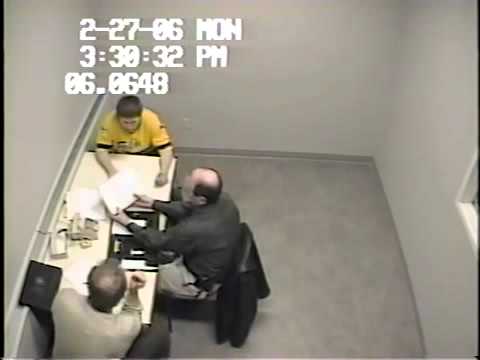
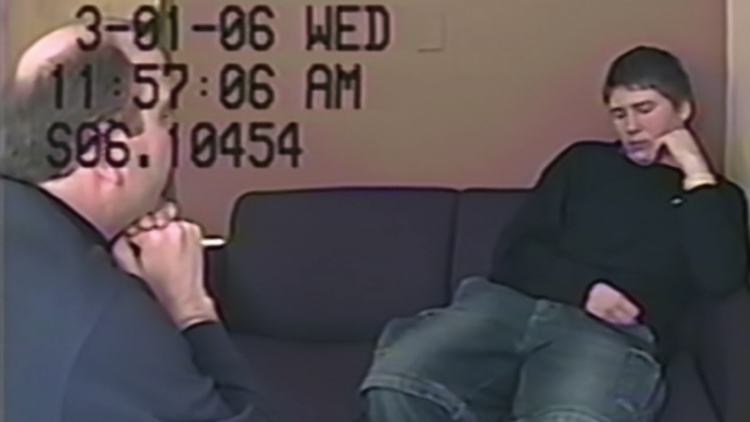


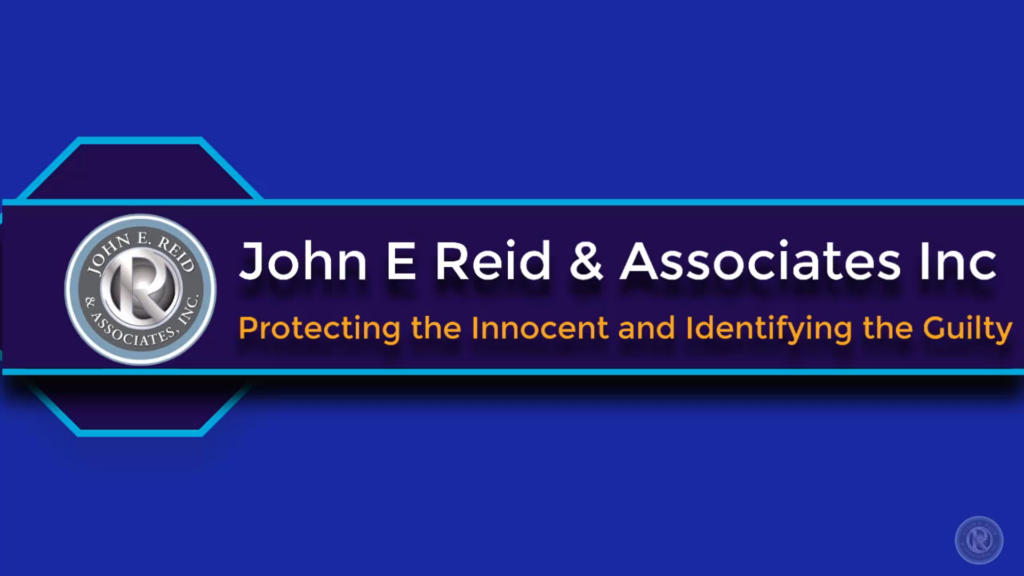
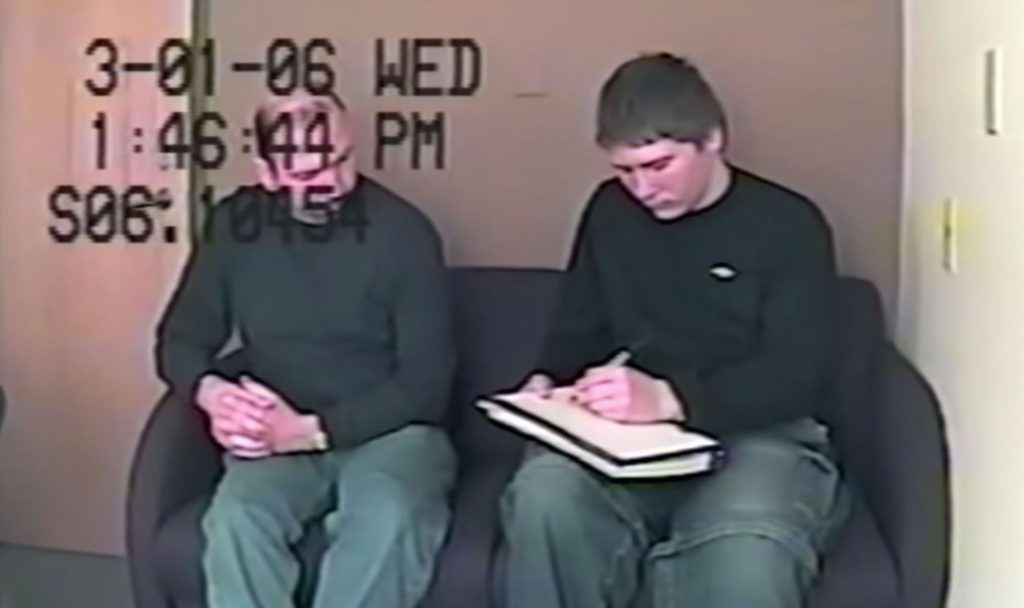




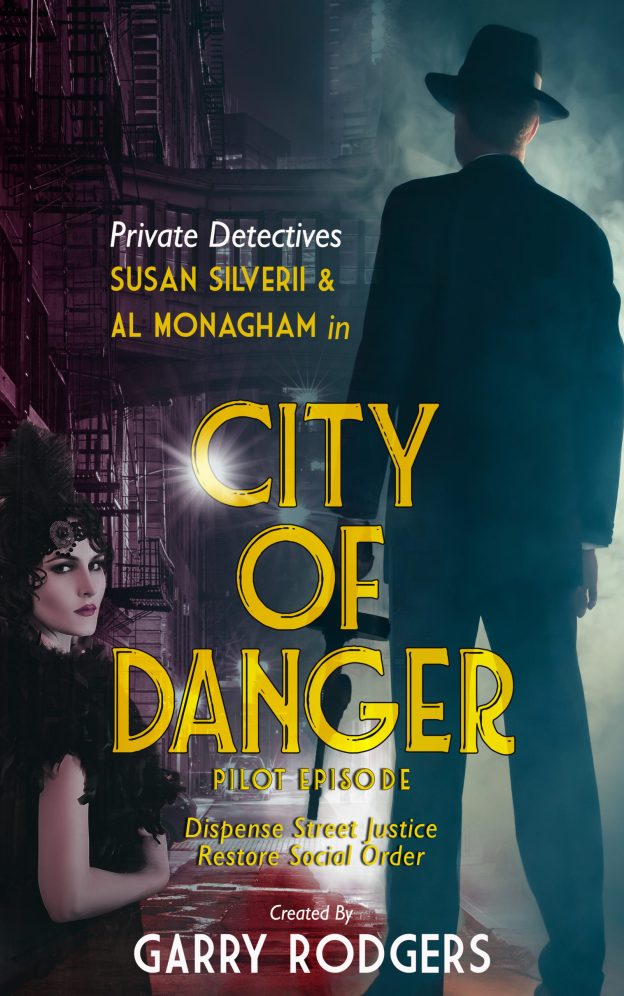


 The Fifty Shades of Grey trilogy never was, and never will be, nominated for Pulitzer or Nobel literature prizes. But you can’t argue with Fifty Shades’ incredible commercial success as ebook, print, audio, and film products. It’s been ten years since author EL James released this tale of tension between virginal Anastasia Steele and billionaire bad boy Christian Grey. The passing decade hasn’t stopped the intrigue surrounding the story series. That’s due to the one main reason why Fifty Shades is phenomenally popular with (some) women.
The Fifty Shades of Grey trilogy never was, and never will be, nominated for Pulitzer or Nobel literature prizes. But you can’t argue with Fifty Shades’ incredible commercial success as ebook, print, audio, and film products. It’s been ten years since author EL James released this tale of tension between virginal Anastasia Steele and billionaire bad boy Christian Grey. The passing decade hasn’t stopped the intrigue surrounding the story series. That’s due to the one main reason why Fifty Shades is phenomenally popular with (some) women.


 I need to stop for a sec and say something about Erika Leonard. This was not this woman’s first trip to town. She was already in her forties and worked as a film producer by day and a sharp marketer by night. She knew exactly was she was doing by building a fan base—a repeat audience who would keep on buying her episodes and recommend them to others over the internet. It’s now called “word-of-mouse” rather than “word-of-mouth”.
I need to stop for a sec and say something about Erika Leonard. This was not this woman’s first trip to town. She was already in her forties and worked as a film producer by day and a sharp marketer by night. She knew exactly was she was doing by building a fan base—a repeat audience who would keep on buying her episodes and recommend them to others over the internet. It’s now called “word-of-mouse” rather than “word-of-mouth”.